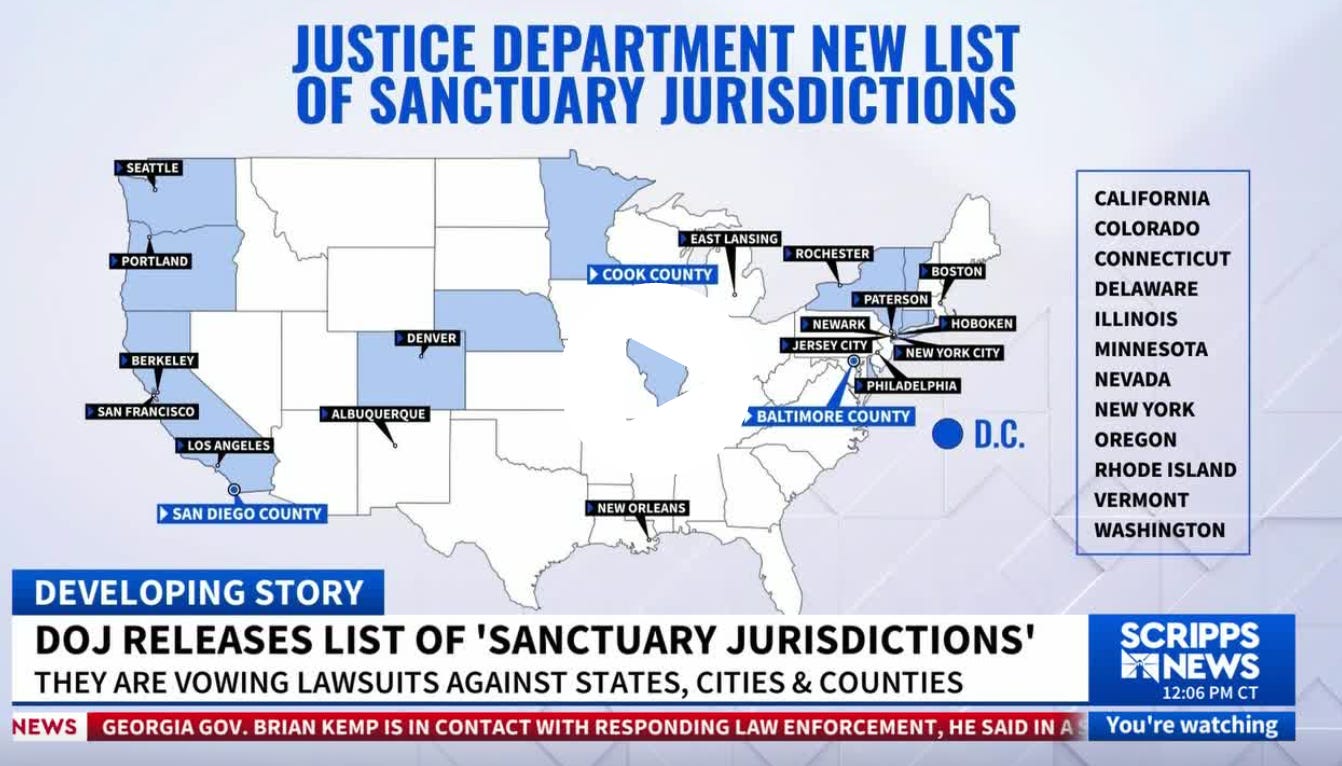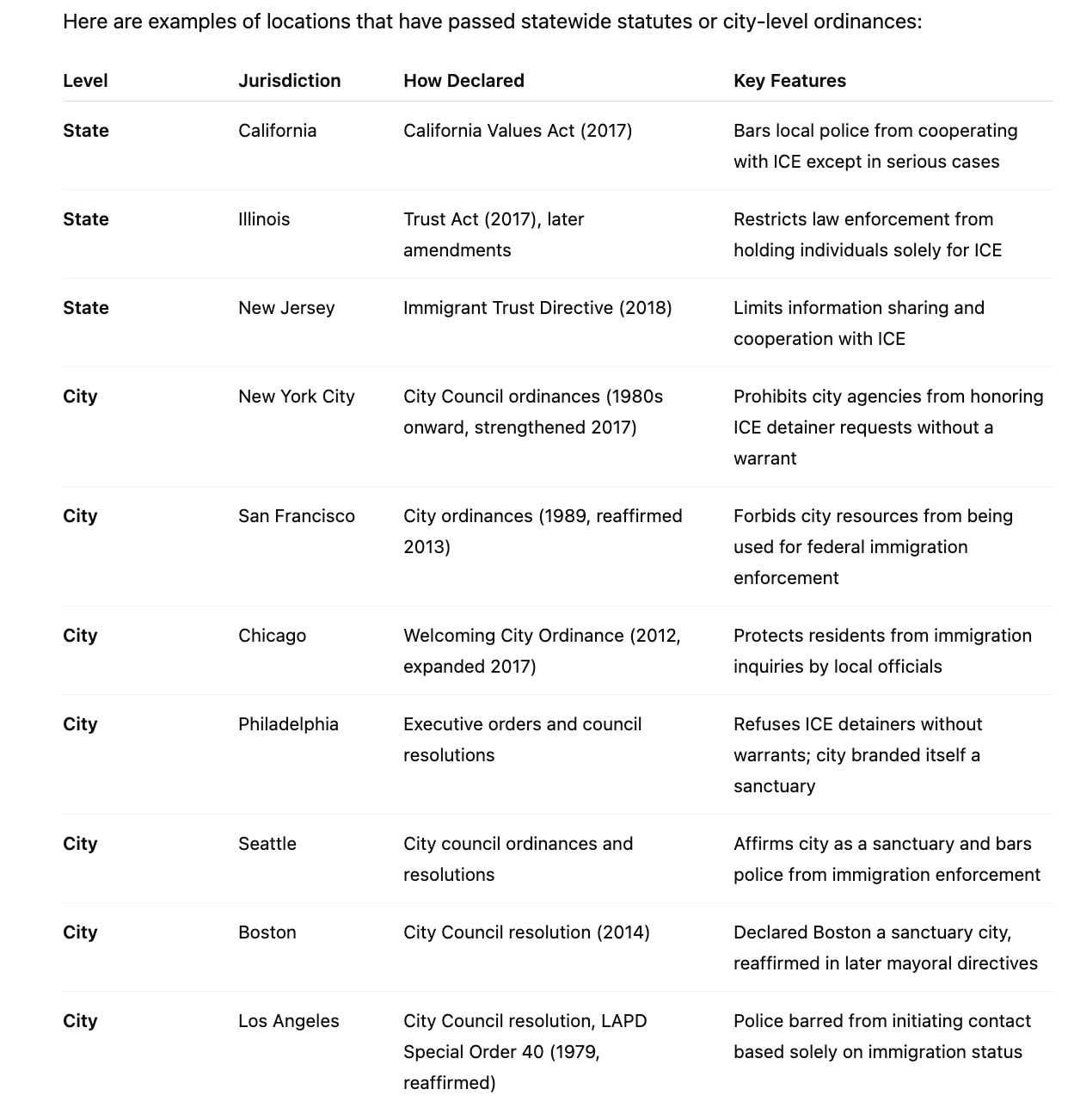What Exactly Is a Sanctuary City or State—and Why Isn't Vermont One?
The question of whether Vermont is a “sanctuary state” came into sharp focus this month after U.S. Attorney General Pam Bondi sent a letter to Governor Phil Scott identifying Vermont as one of 12 states allegedly obstructing federal immigration enforcement. Bondi’s letter, issued under President Trump’s recent executive order, warned that Vermont could face federal consequences unless it changed its policies. In response, Scott pushed back, writing that the designation “has been made in error” and that Vermont has no law or policy that interferes with the enforcement of federal immigration law.
The exchange raises a larger question: what exactly does it mean to be a sanctuary city or state, and how do jurisdictions get labeled that way?
The Political Label of “Sanctuary”
The term “sanctuary city” or “sanctuary state” has no formal legal definition under U.S. law. Instead, it is a political label often used to describe jurisdictions that limit cooperation with federal immigration enforcement. According to immigration law experts, sanctuary policies exist on a spectrum: some municipalities actively resist federal requests, while others simply choose not to devote local resources to enforcing immigration law.
In practice, sanctuary jurisdictions may restrict local police from questioning people about immigration status, decline to honor federal detainer requests without a judicial warrant, or refuse to enter into contracts with federal immigration authorities that deputize local officers to enforce immigration law. According to States Newsroom, these jurisdictions generally “refuse to assist with immigration raids or accede to requests for local jails to hold prisoners for deportation.”
Because the term is not codified in federal law, there is no single action that automatically turns a place into a sanctuary. Instead, the designation is applied through political debate, executive orders, or legislation.
How the Federal Government Labels Sanctuaries
Although Congress has never passed a law defining sanctuary jurisdictions, presidents have attempted to establish them through executive authority. According to the U.S. Department of Justice, President Trump’s 2025 Executive Order 14287 directed the Attorney General to identify states and localities that “obstruct the enforcement of federal immigration laws.”
On August 5, 2025, Attorney General Pam Bondi announced a list of 12 states and dozens of cities and counties labeled as sanctuary jurisdictions, including Vermont. Bondi warned that these governments could face lawsuits or loss of federal grants if they failed to “eliminate laws, policies and practices that impede federal immigration enforcement,” according to a Justice Department press statement.
This was not the first such attempt. In 2017, the Trump administration also sought to cut off funding to sanctuary cities, but federal courts blocked the order, ruling that the federal government cannot commandeer state or local agencies to enforce federal law.
What the Law Actually Says
Under the Constitution, immigration enforcement is a federal responsibility. The U.S. Supreme Court has consistently held that the federal government cannot compel states or cities to enforce federal laws, a doctrine known as the “anti-commandeering principle.”
The Trump administration has argued that certain state and local policies violate federal statutes, particularly 8 U.S.C. §§ 1373 and 1644, which prohibit governments from restricting communication between local officials and federal immigration authorities. However, most sanctuary policies are written carefully to avoid conflicting with those statutes. According to legal scholars, refusing to detain inmates without a warrant or declining to sign enforcement contracts with ICE does not violate these laws.
Federal judges have generally sided with states and cities, blocking attempts to punish jurisdictions that decline to actively enforce immigration law. As a result, sanctuary designations remain largely political rather than legal.
Where Sanctuary Declarations Exist
While most places are labeled “sanctuary” because of policies rather than formal declarations, some states and cities have explicitly declared themselves sanctuary jurisdictions through resolutions or laws.
These declarations mark a clear distinction from places like Vermont, where no formal sanctuary resolution exists.
Vermont’s Actual Policies
Despite being included on the federal list, Vermont officials insist the state does not meet the criteria for a sanctuary jurisdiction. In an August 2025 letter to Attorney General Bondi, Governor Phil Scott wrote that the designation “has been made in error,” explaining that Vermont has no law or policy that impedes federal enforcement of immigration law.
According to the Vermont Attorney General’s office, state law even specifies that any rule conflicting with 8 U.S.C. §§ 1373 or 1644 is automatically abolished. Vermont does, however, limit the role of local law enforcement in immigration matters.
The state prohibits agencies from entering into 287(g) agreements with ICE without approval from the governor. Vermont’s “Fair and Impartial Policing” policy also directs officers not to ask about immigration status unless directly relevant to a criminal investigation and prohibits the release of certain personal information—such as addresses, license plate numbers, or release dates—to federal authorities.
At the same time, Vermont complies with all federal requirements. The state shares fingerprints and biometric data with federal databases when someone is arrested. The Department of Corrections leases prison space to the U.S. Marshals Service, which may include ICE detainees. These actions, Governor Scott has argued, show that Vermont is not obstructing federal immigration law.
Why Vermont Isn’t a Sanctuary State
The central issue is that Vermont has never passed a law or resolution declaring itself a sanctuary state. Instead, it has crafted policies to balance community trust with compliance to federal law. According to Vermont officials, the state’s approach is one of neutrality: Vermont does not actively assist federal immigration enforcement beyond what is legally required, but it also does not interfere with it.
In this sense, Vermont differs significantly from jurisdictions such as California or New York City, which have enacted formal sanctuary statutes or ordinances. By contrast, Vermont has no law that blocks communication with federal immigration authorities, and its policing policies are explicitly designed to comply with federal statutes.
Conclusion
The debate over sanctuary jurisdictions is as much political as it is legal. There is no federal law that officially defines what makes a city or state a sanctuary. Instead, the designation depends on a combination of local policies, state laws, and, in some cases, political rhetoric from the federal government.
By those measures, Vermont does not fit the definition of a sanctuary state. Governor Scott and state officials have repeatedly emphasized that Vermont has no laws obstructing federal immigration enforcement. While the state limits the role of its local police in immigration matters, its laws are carefully written to comply with federal statutes.
For Vermonters, the “sanctuary” label is more a political accusation than a legal reality
.




